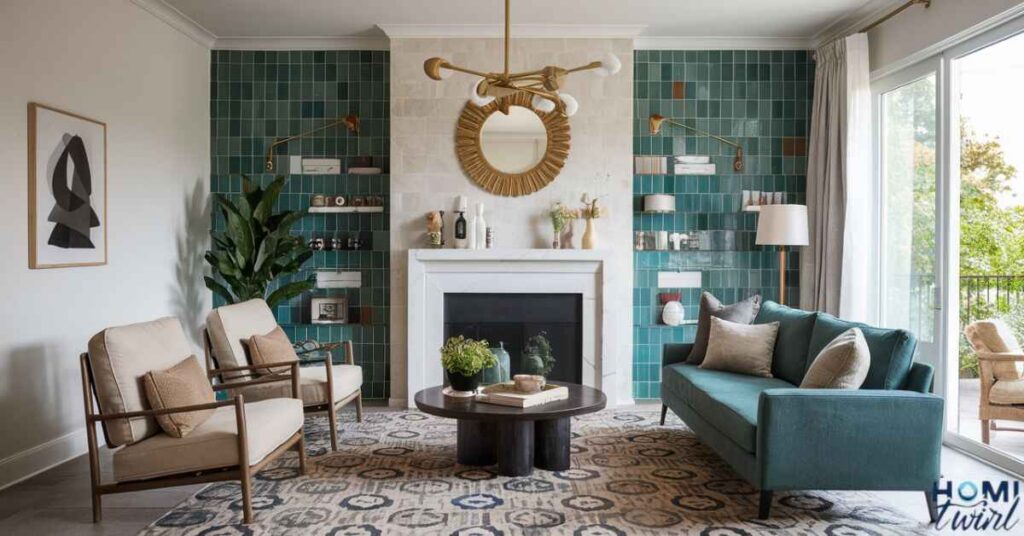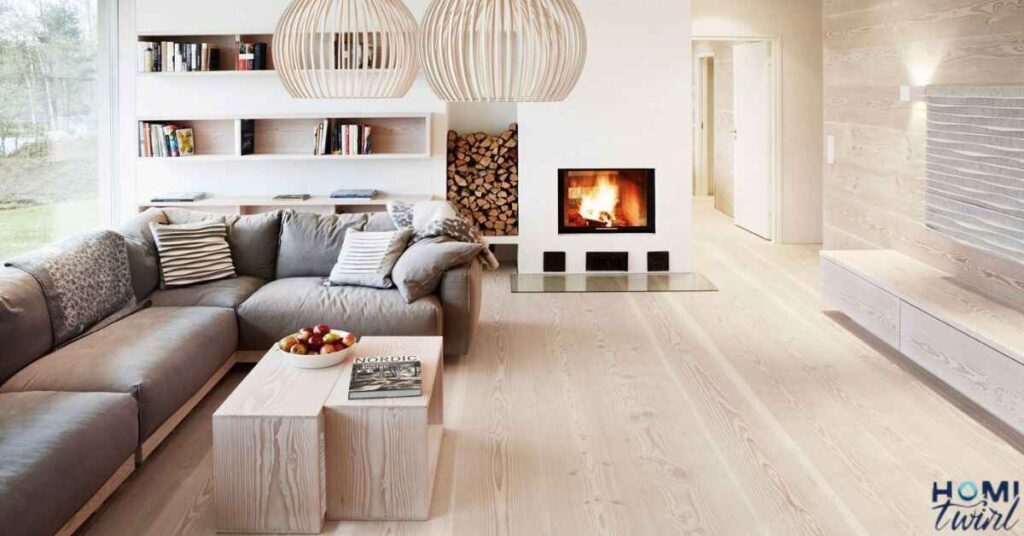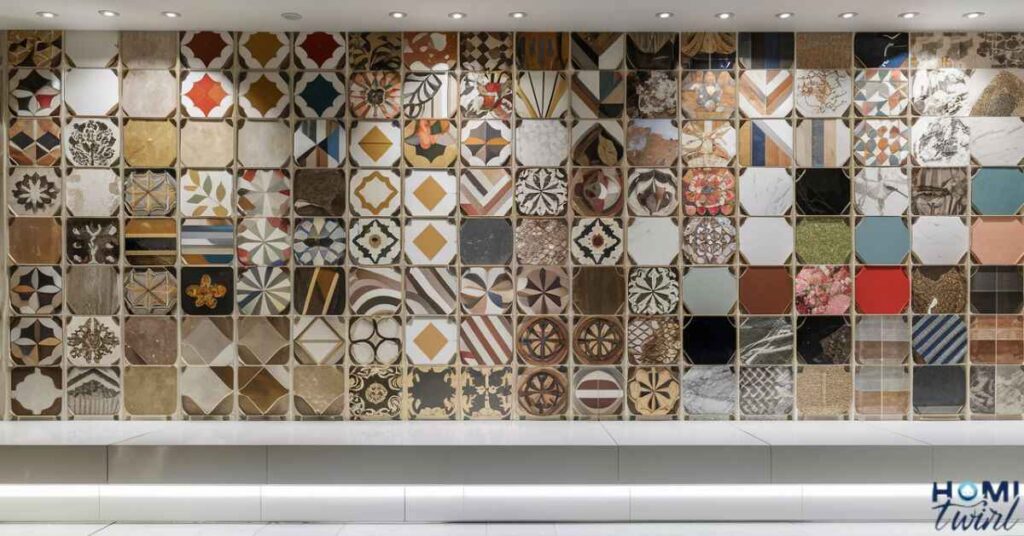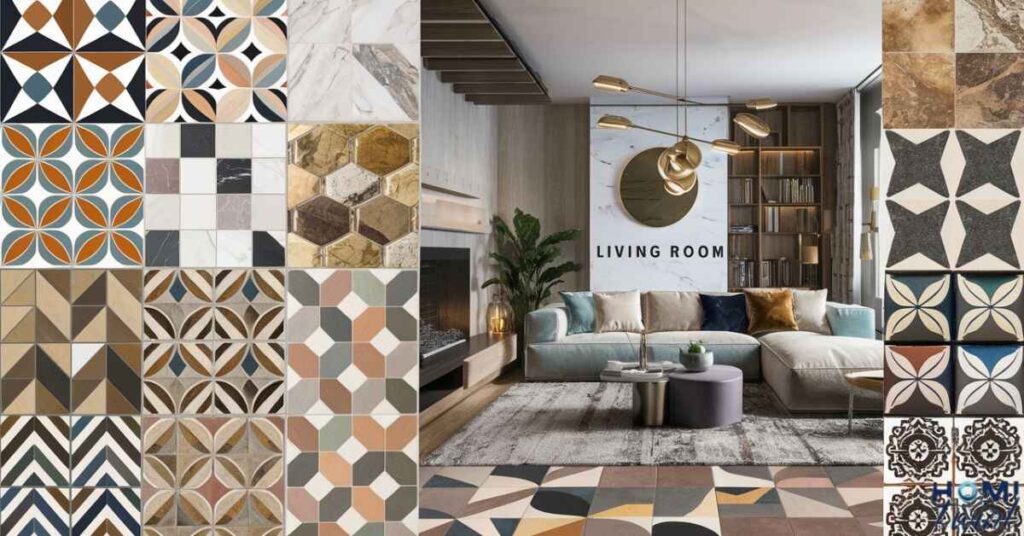Choosing tiles for your living room is important because it’s where you relax and entertain guests. To start, consider the room’s size and how much foot traffic it gets. Think about the colors and textures you like.
Bright colors can be exciting, but neutral shades are calming and last longer. Materials like ceramic and vitrified tiles are durable and easy to clean. Look for tiles with anti-slip features to keep everyone safe.
Also, choose tiles resistant to stains and moisture to keep them looking new. Larger tiles make the room feel spacious and modern. Orientbell Tiles offers various options to match your style.
How To Choose The Perfect Tiles For Your Living Room

The living room is the heart of any home, where families gather to relax, entertain guests, and create cherished memories. As such, choosing the right tiles for this crucial space is essential in setting the desired ambiance and ensuring practicality.
Read This Blog: HOW TO MAKE A SECRET ROOM UNDER YOUR BED
In this comprehensive guide, we’ll explore the key factors to consider when selecting tiles for your living room, from color and material to size and features.
Which Color Of Tiles Should I Choose For My Living Room?
The color of your living room tiles plays a significant role in shaping the overall mood and atmosphere. While bright, vibrant hues like reds and oranges may initially seem appealing, they can quickly become overwhelming and visually fatiguing in the long run. Instead, opt for soothing, neutral shades that create a calming and welcoming environment.
Some popular color choices for living room tiles include.
- Beige: Warm and inviting, beige tiles exude a sense of coziness and blend seamlessly with various decor styles.
- Grey: A versatile and modern choice, grey tiles can range from light and airy to deep and dramatic, suiting both minimalist and contemporary aesthetics.
- Brown: Rich and earthy, brown tiles impart a natural, grounded feel to your living space, perfect for creating a cozy and inviting ambiance.
When selecting tile colors, consider the overall color scheme of your living room, as well as the amount of natural light it receives. Lighter shades can help brighten up a dimly lit space, while darker tones can add depth and warmth to a room flooded with sunlight.
What Materials are Living Room Tiles Made Of?
Living room tiles must withstand heavy foot traffic, spills, and everyday wear and tear. As such, they are typically crafted from durable materials like.
- Ceramic: A classic choice, ceramic tiles are affordable, low-maintenance, and available in a wide range of colors and styles.
- Vitrified: Exceptionally hard and dense, vitrified tiles are resistant to scratches, stains, and moisture, making them ideal for high-traffic living areas.
- Porcelain: Known for its strength and low porosity, porcelain tiles are a long-lasting option that can mimic the look of natural stone or wood.
In addition to these popular choices, you may also consider natural stone tiles like marble, granite, or slate for a luxurious and unique look. Alternatively, wood-look tiles can provide the warmth and character of hardwood floors without the maintenance challenges.
What Features Should You Keep in Mind Before Buying Living Room Tiles?

Beyond aesthetics, there are several practical features to consider when selecting tiles for your living room.
Slip Resistance: Safety should be a top priority, especially in areas with high foot traffic. Look for tiles with a textured or matte finish to prevent slips and falls, particularly for households with young children or elderly family members.
Stain and Abrasion Resistance: Spills and scuffs are inevitable in a living room, so choose tiles that are resistant to stains and abrasions. Tiles with a glazed or polished surface tend to be more resilient and easier to clean.
Moisture Resistance: If you plan to use tiles on living room walls or in areas prone to moisture, opt for tiles with low porosity to prevent water absorption and potential damage.
Radiant Heat Compatibility: If you have radiant floor heating or plan to install it in the future, ensure your chosen tiles are compatible with this system to maximize efficiency and prevent cracking or discoloration.
Also Read This Blog: HOW BIG IS A DOUBLE BED IN A HOTEL ROOM
What Sizes of Tiles Should Be Used in the Living Room?
The size of your living room tiles can significantly impact the overall look and feel of the space. Larger tiles, typically 12 inches or more, create a sense of spaciousness and can make a room appear more modern and sleek. Fewer grout lines also contribute to a cleaner, more seamless appearance.
Light-colored larger tiles are particularly effective in making a room feel airy and open, while darker hues can add depth and coziness to a more intimate living area.
Conversely, smaller tiles (4 inches or less) can be used to create intricate patterns or highlight specific areas, like a fireplace surround or accent wall. However, keep in mind that more grout lines can make a space feel busier and potentially smaller.
When choosing tile sizes, consider the proportions of your living room and the desired aesthetic. Larger tiles tend to work best in open-concept or expansive living areas, while smaller tiles can be more suitable for cozy, traditional spaces.
Creative Corner Decoration Ideas for Living Room

While the majority of your living room may be tiled, don’t overlook the corners as an opportunity for creative expression. These often-neglected spaces can be transformed into eye-catching focal points with unique tile designs, patterns, or materials.
- Accent Walls: Create a stunning feature wall by using contrasting tiles or incorporating intricate mosaics or murals in the corner.
- Built-in Shelving: Integrate tiled shelving or niches into the corner, providing both functional storage and visual interest.
- Textured Patterns: Use three-dimensional or textured tiles to create captivating patterns or designs that catch the eye and add depth to the space.
- Mixed Materials: Combine tiles with other materials like wood, stone, or metal for a truly unique and personalized touch.
Most Popular Tiles

When it comes to living room tiles, certain styles and designs have captured the hearts of homeowners and interior designers alike. Some of the most popular choices include:
- Wood-look Tiles: Offering the warmth and rustic charm of hardwood floors without the maintenance challenges, wood-look tiles are a timeless and versatile option.
- Patterned Tiles: From classic geometric patterns to bold, contemporary designs, patterned tiles add visual interest and personality to any living space.
- Textured Tiles: Tiles with raised or embossed textures can create depth and dimension, while also providing slip-resistance for added safety.
- Large-format Tiles: As mentioned earlier, larger tiles can create a seamless, modern look and make a room feel more spacious.
Get Updates on the Latest Tile Designs and Trends
The world of tile design is constantly evolving, with new styles, colors, and materials emerging regularly. To stay up-to-date with the latest trends and inspirations for your living room, consider signing up for our newsletter. You’ll receive exclusive updates, design tips, and insights straight to your inbox, ensuring your living space remains stylish and on-trend.
By carefully considering factors like color, material, features, and size, you can select the perfect tiles to transform your living room into a stunning and functional space that reflects your personal style and meets your family’s needs. With the right tiles, your living room will become a welcoming haven where cherished memories are made.
Frequently Asked Question
Can I mix different tile sizes in my living room?
Yes, you can mix tile sizes to create visual interest and define different areas. For example, use larger tiles in the main living area and smaller tiles for accent walls or borders.
Are natural stone tiles a good choice for living rooms?
Natural stone tiles like marble or granite can add a luxurious touch to your living room. However, they require more maintenance and can be slippery, so consider adding a textured finish for traction.
How do I choose the right grout color for my living room tiles?
Choose a grout color that complements your tile shade and design. For a seamless look, opt for a grout color that closely matches your tiles.
Can I install radiant floor heating under living room tiles?
Yes, many tile materials are compatible with radiant floor heating systems. Just ensure you select tiles rated for this application and follow the manufacturer’s instructions.
What is the best way to clean living room tiles?
Regular sweeping and damp mopping with a pH-neutral cleaner is recommended. Avoid harsh chemicals or abrasive cleaners that can damage the tile surface.
How do tiles affect the acoustics in a living room?
Hard surface tiles can amplify sound and create echoes in a living room. Consider using area rugs, curtains, or acoustic panels to absorb noise and improve acoustics.
Conclusion
Selecting the right tiles for your living room is a crucial decision that can significantly impact the overall aesthetic and functionality of this central space in your home. By considering factors such as color, material, size, and practical features like slip resistance and moisture protection, you can create a living room that perfectly combines style and durability.
Remember to let your personal preferences guide your choices while keeping in mind the room’s purpose and the needs of your family. With careful planning and consideration, your living room tiles will not only enhance the beauty of your space but also provide a long-lasting, low-maintenance solution that you’ll enjoy for years to come.







